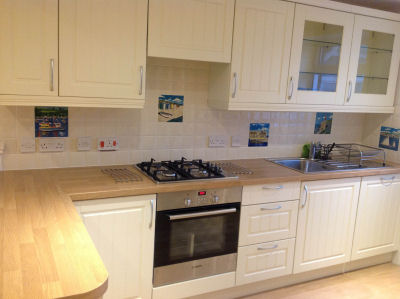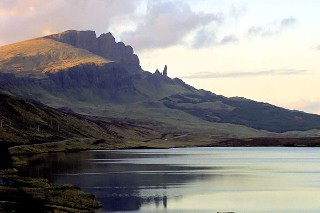The business was started on the Isle of Skye in 2007 by supplying some of the local castles with specially designed ceramic picture tiles featuring the castle views. This very quickly expanded to include designs featuring many of the very photogenic wildlife to be found in the Highlands and Islands of Scotland.
We found that this wasa totally unique product with a very wide appeal to both visitors and locals alike. There is nothing similar available on a ceramic tile, at a price and quality that makes it instantly attractive.
that this wasa totally unique product with a very wide appeal to both visitors and locals alike. There is nothing similar available on a ceramic tile, at a price and quality that makes it instantly attractive. Our design range is constantly expanding with many kitchen and bathroom feature tiles now included, giving us in excess of 250 designs, most of them unique to Skye Tiles.
We have stockists throughout Scotland, including a large number of very well known and popular castles and visitor centres, and we now use our website to reach out to a much larger customer base.
How They Are Made
Our tiles are made exclusively for us and we work closely with our supplier to ensure that our picture tiles are of a consistently high standard, and offer superb value for money.
Each tile is created by first applying the raised relief for the design. This is known as tube-lining and is a very labour intensive and highly skilled procedure. A tool similar to a piping bag for icing, with a very fine opening, is used to apply lines of very fine clay to the surface of a tile tocreate the design. It is then hand paintedwith a number of layers, glazed and finally fired at over 1000 deg C for 24 hours. This ensures that the vibrant colours used in the painting will never fade, and that the tile maintains its quality for a lifetime. A black felt cloth covered board is then applied as a backing to the tile and a hanging hook is provided to enable the tile to be hung as a wall picture.
Alternatively, our ceramic tiles can be fixed to any kitchen or bathroom wall with standard tile adhesive, perhaps as a feature within a larger tiled area. The tiles are a standard thickness of 6-7mm so will match most plain tiles of any size. The tile backing can be easily removed by soaking in hot water for 20 minutes to soften the glue.
Crazing
During the lengthy cooling phase of the firing, which takes between 14-17 hours, it is quite normal for very fine crazing to occasionally occur on the tile glaze. It is caused by the difference in the expansion coefficient between the glaze and the tile body, whereby the glaze cools and contracts at a minutely different rate to the tile body. It is influenced by the environmental conditions present during cooling such as humidity, air temperature and vibration. This does not damage or weaken the tile and this slight crazing will not be visible at normal viewing distance. The presence of slight crazing on a tile is quite normal and does not indicate a sub-standard tile in any way. Delft is a good example of where crazing is actually a design feature of the pottery.
Looking for West Country designs?
We have another picture tile business, supplying tiles with designs based on scenery and views from the West Country. Plenty of boats, beaches and sea-life so if you can't find what you are looking for on our website, take a look at Salcombe Ceramics !



